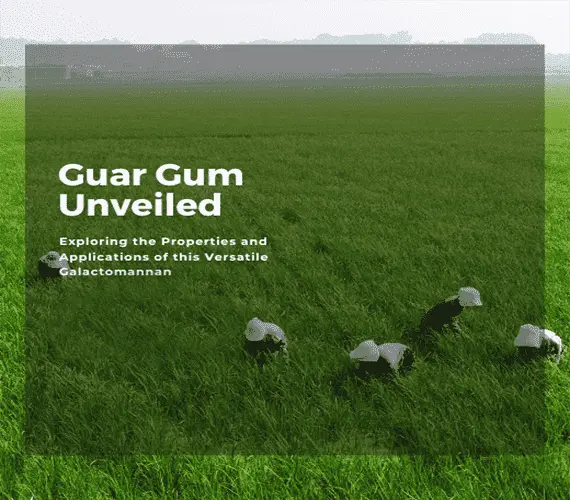

KNOW MORE
Guar gum, also known as guaran, constitutes a galactomannan sourced primarily from the ground endosperm of guar beans. Through a process of dehusking, milling, and screening, guar seeds are transformed into guar gum. Typically, this results in a free-flowing, pale, off-white colored powder with a texture ranging from coarse to fine.

OUR PROPERTIES
Chemical Composition:
Guar gum is a polysaccharide composed of galactose and mannose sugars. The linear chain of ß 1,4-linked mannose residues forms the backbone, with galactose residues 1,6-linked at every second mannose, creating short side branches.
Solubility and Viscosity:
Compared to locust bean gum, guar gum boasts greater solubility and acts as a superior emulsifier due to its increased galactose branch points. While not self-gelling, guar gum can gel when cross-linked with borax or calcium. It exhibits nonionic and hydrocolloidal properties in water, maintaining stability within a pH range of 5-7. Though unaffected by ionic strength, it may degrade at pH extremes and elevated temperatures. Guar gum remains insoluble in most hydrocarbon solvents.
Thickening:
Economically advantageous, guar gum offers nearly 8 times the water-thickening potency of cornstarch, requiring only a small quantity to achieve sufficient viscosity. It finds utility in various multi-phase formulations, serving as an emulsifier to prevent oil droplet coalescence or as a stabilizer to hinder solid particle settling.
Industrial Applications of Guar Gum:
Guar gum finds extensive applications in various industries, including food, technical processes, oil drilling, textile printing, emulsification, stabilization, viscosity enhancement, water-based paints, hydraulic fracturing, hydroseeding, and beyond. Its versatility and cost-effectiveness make it a valuable component in numerous formulations.